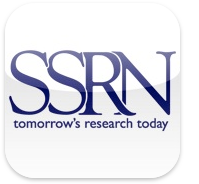‘Product-Attribute Information’ and ‘Product-Use Information’: Smart Disclosure and New Policy Implications for Consumers’ Protection
 Scholars in law and economics have long addressed the issue of how to protect consumers when asymmetric information taints their relationship with their professional counter-parties. Particular attention has been devoted to the fact that consumers are not familiar with the features of the products they are offered. On the contrary, little attention has been devoted to the fact that another piece of information might be important to the consumers, namely the information about their use patterns. As recent studies have shown, consumers are not aware of their usage habits, while professionals spend enormous resources in mapping and recording it. This might suggest the opportunity of a regulatory intervention, as the consumers are also affected by this asymmetric information. This phenomenon is part of a novel regulatory approach named “smart disclosure”, that is arising in the U.S and U.K. One example of such a regulation is expressed by the “Record, Evaluate and Compare Alternative Prices” (RECAP) model, according to which firms should disclose to every consumer their personal usage information by means of electronic documents. In this way, consumers can easily download their usage information file from their provider’s webpage. Then, users can upload their electronic document to an independent “comparative website” that will show them what prices are charged by different competitors, for the same product (or service) usage pattern. This paper surveys the literature on product use information and analyzes whether and to what extent Italian regulator is trying to ensure consumers’ awareness as to their use pattern. Particular attention is devoted to the Italian mobile phone market and to the search engine named Supermoney, whose activity is supervised by the Italian Communication Authority (AGCoM). Lastly, this work detects which features pertain to effective consumer protection law based on product-use information.
Scholars in law and economics have long addressed the issue of how to protect consumers when asymmetric information taints their relationship with their professional counter-parties. Particular attention has been devoted to the fact that consumers are not familiar with the features of the products they are offered. On the contrary, little attention has been devoted to the fact that another piece of information might be important to the consumers, namely the information about their use patterns. As recent studies have shown, consumers are not aware of their usage habits, while professionals spend enormous resources in mapping and recording it. This might suggest the opportunity of a regulatory intervention, as the consumers are also affected by this asymmetric information. This phenomenon is part of a novel regulatory approach named “smart disclosure”, that is arising in the U.S and U.K. One example of such a regulation is expressed by the “Record, Evaluate and Compare Alternative Prices” (RECAP) model, according to which firms should disclose to every consumer their personal usage information by means of electronic documents. In this way, consumers can easily download their usage information file from their provider’s webpage. Then, users can upload their electronic document to an independent “comparative website” that will show them what prices are charged by different competitors, for the same product (or service) usage pattern. This paper surveys the literature on product use information and analyzes whether and to what extent Italian regulator is trying to ensure consumers’ awareness as to their use pattern. Particular attention is devoted to the Italian mobile phone market and to the search engine named Supermoney, whose activity is supervised by the Italian Communication Authority (AGCoM). Lastly, this work detects which features pertain to effective consumer protection law based on product-use information.
Download articolo completo:


